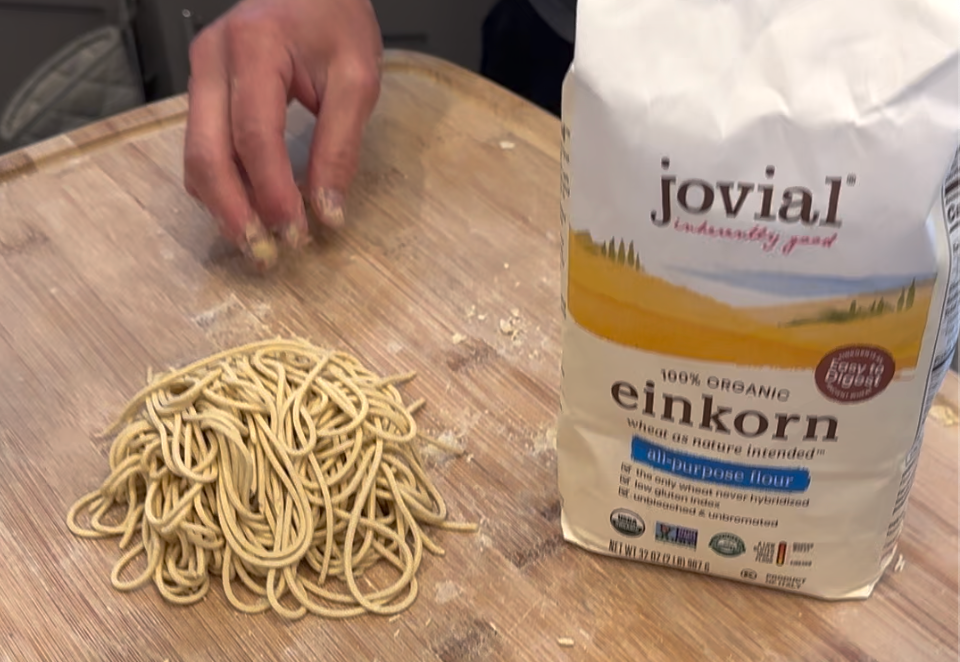The Fascinating History of Menma: The Bamboo Topping That Completes Your Ramen
- manvillechan5
- Dec 17, 2024
- 3 min read

If you've ever enjoyed a bowl of authentic Japanese ramen, you've likely noticed those slightly crunchy, savory bamboo shoots nestled between the noodles and broth. This beloved topping, known as menma, adds not just texture but a depth of flavor that perfectly complements the rich, umami-packed ramen experience. But where did menma come from, how is it made, and why is it such an essential part of Japanese ramen culture? Let's dive into its fascinating history and production process.
The Origins of Menma: A Journey From Taiwan to Japan
Menma, also known as shinachiku (シナチク) in Japan, has roots tracing back to Taiwan. The story begins in the early 20th century when fermented bamboo shoots were introduced to Japan from Taiwanese cuisine.
In Taiwan, bamboo shoots were traditionally preserved by fermenting them in salt—a method used to extend shelf life and enhance flavor. Japanese cooks saw the potential of this salty, umami-rich food and adapted it to fit their evolving ramen culture. By the mid-20th century, menma had cemented its place as a go-to ramen topping across Japan.
Fun Fact: "Shinachiku" literally means "Chinese bamboo" (shina = China, chiku = bamboo), highlighting its Chinese-Taiwanese origins.
How Menma Is Made: A Balance of Fermentation and Flavor

At its core, menma is made from fermented bamboo shoots, specifically the tender young shoots of the Moso bamboo (a common variety found in Asia). Here's a breakdown of how menma is commercially produced:
Harvesting - The young bamboo shoots are harvested when they are tender and still packed with moisture. Timing is crucial because older shoots become too fibrous.
Boiling - Fresh bamboo shoots contain natural toxins that can cause bitterness, so they are boiled first to remove these compounds.
Fermentation - After boiling, the shoots are placed in a brine (saltwater solution) and fermented for several weeks. The fermentation process enhances their texture and develops their savory, umami flavor.
Drying or Packaging - Once fermented, the menma is dried for preservation or packed in salt brine to retain moisture and flavor. In commercial ramen shops, menma is often rehydrated before serving.
The Flavor and Texture of Menma: Why Ramen Lovers Can't Get Enough
So why is menma such a popular ramen topping? It comes down to its unique combination of texture and flavor:
Texture: Menma has a slightly crunchy, fibrous bite that contrasts beautifully with the softness of ramen noodles. It's a textural delight that adds a satisfying chew to every spoonful.
Flavor: The fermentation process gives menma its distinctive savory, salty, and mildly earthy flavor. It soaks up the ramen broth, enhancing the overall depth of taste in each bite.
Whether paired with a creamy Tonkotsu broth, a soy-based Shoyu ramen, or even miso ramen, menma provides balance and complexity, making it a perfect topping for any ramen style.
Menma Today: A Staple in Authentic Japanese Ramen
Over the decades, menma has become an essential part of ramen culture. You'll find it in ramen shops across Japan and worldwide, always adding that "final touch" to elevate the bowl. While its production methods have been modernized, the core process of fermentation and preservation remains unchanged, ensuring that menma retains its traditional flavor and charm.
In Japan, menma is so popular that it's even sold as a snack! It can be enjoyed on its own or used as a topping for rice bowls, salads, and stir-fries. But its true calling remains as an irreplaceable addition to ramen.
Conclusion: Small but Mighty – The Role of Menma in Ramen
Menma may seem like a humble topping, but it carries with it a rich history and a labor-intensive production process that has been perfected over generations. From its origins in Taiwan to becoming a ramen essential in Japan, menma’s unique flavor and texture have secured its place in the hearts of ramen enthusiasts worldwide.
So, the next time you slurp a bowl of ramen and bite into those savory bamboo shoots, take a moment to appreciate the artistry and tradition behind this beloved topping.
Want to experience menma the authentic way? Join us at The Story of Ramen in San Francisco and taste how this time-honored topping enhances a bowl of handmade ramen noodles. Whether you're learning to make ramen from scratch or savoring every bite, we bring Japanese ramen culture to life—one delicious bowl at a time. Check out our class schedule here: https://www.ramenpartysf.com/ramen-making-party
 | Manville Chan is the Founder and Chief Experience Officer at The Story of Ramen. |




Comentarios